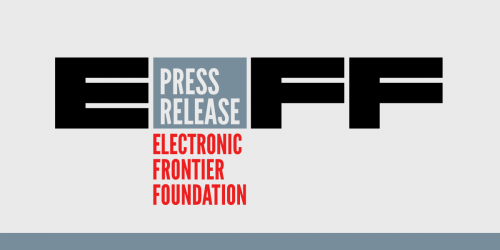EFF is proud to participate in World IPv6 Launch Day on June 6, 2012.
It is a testament to the enduring success and growing importance of the Internet that the original space of over four billion addresses has effectively been exhausted. Workarounds are in common use to share and reuse addresses, making this a problem that most users can continue to ignore for now. On the other hand, it already forces network engineers to work under difficult constraints and justify each request for a new address. Serving a variety of hostnames from only one IP address can make SSL certificate management complex, adding a needless obstacle to HTTPS adoption. Address scarcity also presents a serious roadblock to new ISPs, especially outside North America. As every new mobile device service is now an ISP too, the problem is only accelerating.
IPv6 solves this issue by starting out with a much larger block of addresses. Famously, the address space of 2128 is large enough to assign almost 5 x 1028, or 50 billion billion billion, addresses to every living human. The protocol also includes built-in features for configuration and encryption that have traditionally been performed by other software running on top of the IP network layer, and support for extremely large frame sizes for future scalability.
The transition to IPv6 presents some privacy concerns that users should be aware of. As first conceived, a portion of an IPv6 address would be generated from a device's MAC address, making it possible for every remote machine a user communicates with to calculate the unique hardware identity of the user's machine. That allows sites and services anywhere in the world to recognize and track the user's device forever. The sparse address space and decreased need to pool IP addresses with Network Address Translation also make it easier to uniquely identify and track a user.
However, more and more operating system vendors are including plugins to mitigate these concerns and, better yet, enabling them by default. IPv6 support is also available from the Tor Project, but for now you will need to know the address of an IPv6 bridge to use it. As more people adopt IPv6, we should all be vigilant about protecting our privacy, but right now we see no serious hurdles that should warrant putting off IPv6 adoption.
Because the IPv6 protocol follows the standard TCP/IP networking model and sits squarely on the Internet layer, many IPv4 applications can be updated to add IPv6 support with only small changes. For site operators like EFF, the changes can be almost as simple as updating the server software's configuration file to include its IPv6 address and adding IPv6 'AAAA' domain name records. We also recommend configuring an IPv6 aware firewall, such as ip6tables for GNU/Linux.
If getting ready for the Internet of the future is so easy, why hasn't everyone already done it? Unfortunately, for major hosting providers and ISPs, it can be a much bigger task. In order to provide your server with a v6 IP address, they might need to upgrade a significant portion of their network infrastructure. Very few home ISPs offer IPv6, and home routers with IPv6 support haven't been on the shelves for very long. Until demand increases, uptake might be slow, and with workarounds to share IPv4 addresses in place demand remains low. The organizations taking part in World IPv6 Launch Day are helping to change this picture.
If your ISP or hosting provider doesn't offer native IPv6, you can still offer connectivity or start using IPv6 care of a transition technology whereby v6 traffic is tunneled through an IPv4 address. A number of providers and client packages can help make configuring this scenario relatively painless.
www.eff.org will launch over IPv6 on June 6, 2012. Due to hosting limitations, our other sites and services will follow at an as yet undetermined date. In the meantime, future-proofed users can enjoy a preview at ipv6.eff.org.






